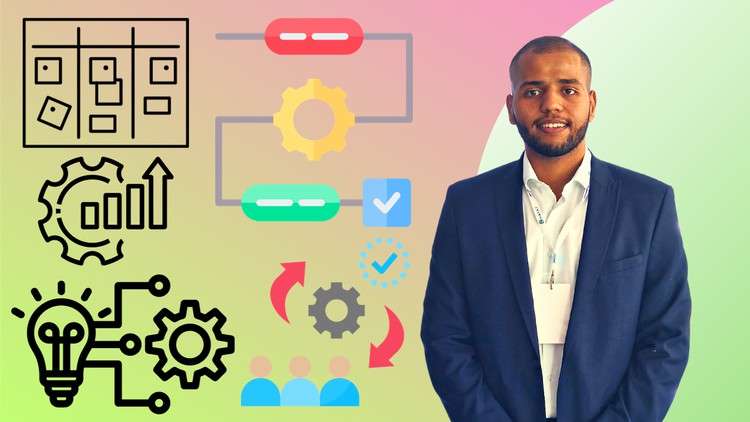
High-end Mastering Lean and KAIZEN: Principles and Practices 2023
What you will learn
1. Introduction to Lean and KAIZEN Principles: Students will gain an understanding of the history and principles of Lean and KAIZEN,
2. Identifying and Eliminating Waste in Logistics Processes: Students will learn how to identify and eliminate waste in logistics processes using Lean principle
3. Value Stream Mapping for Logistics Improvement: Students will learn how to create a value stream map, analyze value stream maps to identify improvement
4. Implementing Continuous Improvement in Logistics: Students will learn how to use the PDCA cycle for continuous improvement,
5. Lean and KAIZEN Tools and Techniques for Logistics: Students will learn about the 5S methodology for workplace organization
6. Benefits of Implementing Lean and KAIZEN in Logistics: Students will learn about the benefits of implementing Lean and KAIZEN methodologies in logistics
Description
This comprehensive online course is designed to teach logistics professionals how to implement Lean and KAIZEN principles and practices in their organizations to achieve success. Through a series of modules and lessons, participants will gain a deep understanding of the principles of Lean and KAIZEN and how to apply them in real-world logistics scenarios. The course will cover topics such as waste reduction, value stream mapping, continuous improvement, and the tools and techniques used in Lean and KAIZEN methodologies.
Course Objectives:
· Understand the principles of Lean and KAIZEN and how they apply to logistics.
· Learn how to identify and eliminate waste in logistics processes.
· Learn how to use value stream mapping to identify opportunities for improvement.
· Understand the importance of continuous improvement and how to implement it in logistics.
· Learn the tools and techniques used in Lean and KAIZEN methodologies and how to apply them in logistics scenarios.
· Gain a deep understanding of the benefits of implementing Lean and KAIZEN in logistics operations.
Course Outline: Module 1: Introduction to Lean and KAIZEN Principles
- · Understanding Lean and KAIZEN
- · The history of Lean and KAIZEN
- · The 5 Principles of Lean
Module 2: Identifying and Eliminating Waste in Logistics Processes
- · Defining waste in logistics
- · Types of waste in logistics
- · The 7 types of muda (waste) in Lean
- · How to eliminate waste in logistics
Module 3: Value Stream Mapping for Logistics Improvement
- · What is value stream mapping?
- · The benefits of value stream mapping
- · How to create a value stream map
- · Analyzing value stream maps to identify improvement opportunities
Module 4: Implementing Continuous Improvement in Logistics
- · The importance of continuous improvement in logistics
- · The PDCA cycle for continuous improvement
- · Techniques for continuous improvement in logistics
- · Measuring and monitoring progress
Module 5: Lean and KAIZEN Tools and Techniques for Logistics
- · Overview of Lean and KAIZEN tools and techniques
- · 5S methodology for workplace organization
- · Kaizen events for rapid improvement
- · Poka-yoke (mistake-proofing) techniques
- · Visual management for logistics
Module 6: Benefits of Implementing Lean and KAIZEN in Logistics
- · How Lean and KAIZEN can improve logistics efficiency and effectiveness
- · Case studies of Lean and KAIZEN implementation in logistics
- · Key success factors for Lean and KAIZEN implementation in logistics
Who Should Take This Course: This course is designed for logistics professionals, including supply chain managers, warehouse managers, transportation managers, and logistics coordinators who want to improve their knowledge and skills in Lean and KAIZEN methodologies. It is also suitable for anyone interested in logistics operations and interested in learning about Lean and KAIZEN principles and practices.
In this course, we don’t just teach you the principles and practices of Lean and KAIZEN – we show you how to apply them specifically to logistics operations. By the end of the course, you’ll have a deep understanding of how to identify and eliminate waste in logistics processes, how to use value stream mapping to identify improvement opportunities, and how to implement continuous improvement techniques in logistics. We also provide practical guidance on how to use Lean and KAIZEN tools and techniques in real-world logistics scenarios, and share case studies of successful implementations. With this course, you’ll be able to transform your logistics operations and achieve true success.
Content